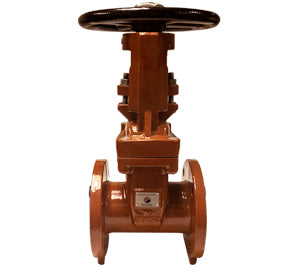About Ductile Gate Valves
Ductile gate valves, also known as ductile iron gate valves, are a type of valve commonly used in various industries and applications to control the flow of fluids, particularly in large diameter pipes and high-pressure systems. They are specifically designed to withstand high pressures, provide reliable sealing, and offer excellent durability.
Here are some key features and information about ductile gate valves:
-
Material: Ductile gate valves are constructed using ductile iron, a type of cast iron that has been treated with a small amount of magnesium to enhance its mechanical properties. Ductile iron offers high strength, corrosion resistance, and ductility, making it suitable for demanding applications.
-
Design: They have a wedge-shaped gate that slides perpendicular to the flow direction within the valve body. When the gate is fully lowered, it forms a seal against the valve seat, preventing fluid flow. Conversely, when the gate is fully raised, it allows unrestricted flow through the valve.
-
Rising vs. Non-rising Stem: These valves can have either a rising or non-rising stem configuration. In the rising stem design, the stem extends above the valve body, allowing visual confirmation of the valve position. Non-rising stem valves have the stem completely contained within the valve body, which makes them suitable for applications with limited space.
-
Bi-Directional Flow: Typically designed for bi-directional flow, meaning they can regulate fluid in both directions. This feature makes them versatile and suitable for applications where flow direction can change.
-
High-Pressure and High-Temperature Applications: Ductile gate valves are commonly used in applications involving high pressures and temperatures, such as water distribution systems, wastewater treatment plants, power generation facilities, oil and gas pipelines, and industrial processes. They are designed to withstand the demands of these environments.
-
Operation: They are easy to operate by turning a handwheel or operating mechanism connected to the valve stem. By rotating the handwheel, the gate is raised or lowered to control the flow of the fluid.
-
Resilient Seating: Many ductile gate valves feature resilient seating materials, such as EPDM or NBR (nitrile rubber), to provide a tight seal and prevent leakage. The resilient seating compensates for minor imperfections or misalignment between the gate and the seat.
-
Accessories: The valves can be equipped with various accessories, including gear operators, electric or pneumatic actuators, position indicators, and locking devices, to facilitate valve operation and enhance control system integration.



